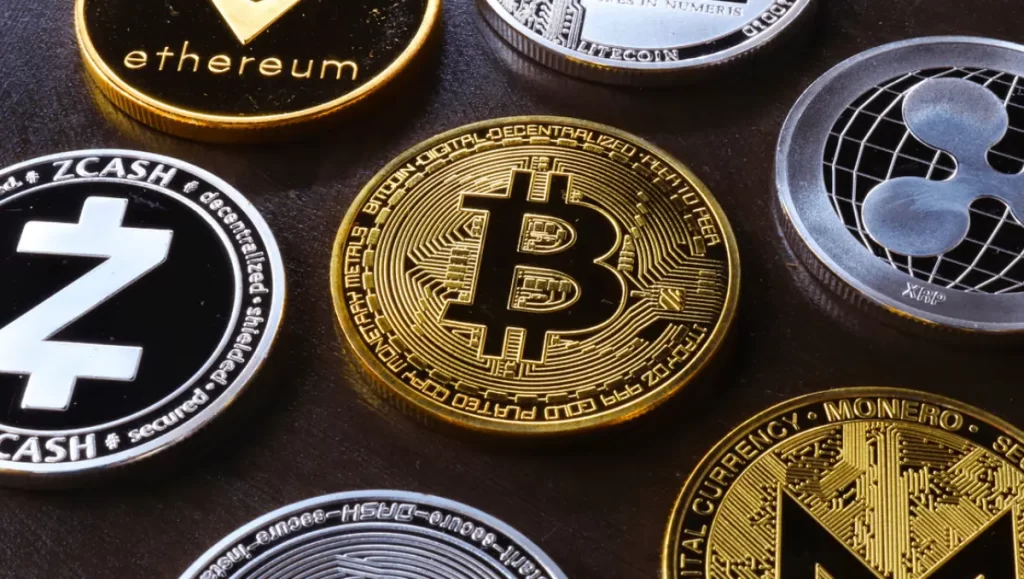
The post What are the Different Types of Crypto Coins appeared first on Coinpedia - Fintech & Cryptocurreny News Media| Crypto Guide
Since 2009 when Bitcoin emerged as a completely new blockchain technology, thousands of new cryptocurrencies have been created. With more than 18,000 currently in circulation, the crypto market is challenging to decipher for a non-enthusiast. However, Bitcoin’s blockchain tech is open source, which has led to an influx of new digital coins.
On top of the traditional cryptocurrency, there are other types of crypto, like stablecoin. People buy Tether as the most popular stablecoin to store their assets as it is pegged with the US dollar, and unlike other cryptos, it is not volatile. The Crypto market also encompasses digital tokens, which are not the same as coins.
What are crypto coins and tokens
Typical cryptocurrencies like Bitcoin use their own independent blockchain. As a digital public ledger, information on each transaction has a unique hash which is added to a ledger. Blockchain is a decentralized network with peer-to-peer payments verified by other participants.
A digital coin is created on the blockchain and has properties like regular money. You can store value or use it as a payment method. However, digital coins are not backed by real-world assets, unlike fiat currency. As a result, most crypto coins have high volatility and huge swings in value.
Tokens are issued mostly as part of an initial coin offering. They are based on a blockchain or sometimes on decentralized finance projects. Tokens can be part of software applications or represent digital art, as in the case of NFTs. Unlike digital coins, tokens are created on top of a blockchain.
Types of cryptocurrency
Bitcoin started the crypto explosion, which led to a market cap of over $2 trillion for all the cryptos. The enormous numbers of crypto coins come from the straightforward way they can be created. Developers can take the source code and build their own blockchain. Slight differences in rules lead to new crypto.
The prime example is Bitcoin Cash, which allows more transactions on a single block of a blockchain. All other crypto coins not named Bitcoin are referred to as altcoins. Nevertheless, Bitcoin is still the leader in total market value, with more than double the market cap as the second-best Ethereum. Tether, Binance Coin and USD Coin follow the two most popular coins, but they are somewhat different.
Top crypto coins
Bitcoin was the first crypto. His blockchain technology found interesting applications outside the crypto market because of its security and other valuable properties. Bitcoin utilizes blockchain for transactions and payments and is not governed by a central authority like a Federal Reserve or bank. Unlike traditional money or credit cards, Bitcoin transactions are verified by the network, and you don’t need third parties. All transactions in Bitcoin’s history are part of a public ledger. As a result, you can send peer-to-peer transfers efficiently. The first crypto has some downsides, like substantial energy costs for mining which is the primary way of verifying transactions and getting new Bitcoins. The other is the incredible volatility of its value.
Ethereum is the second most popular crypto, and it will soon replace the proof-of-work concept with proof-of-stake through the event called The Merge. Ethereum will cut out the miners to reduce energy output and create a more efficient blockchain. Popular digital tokens NFTs utilize Ethereum blockchain. Ethereum has the second biggest market cap and is used as a software development sandbox.
Stablecoin are close to the top
One issue with cryptocoins is high fees when converting them into fiat currency. Investors are using other crypto coins to avoid this problem. Tether is the most popular stablecoin and is tied to the US dollar. It combines blockchain technology and the security of fiat currency backed up by a real-world asset. Although Tether is unsuitable for investment because of its flat value, it climbed to the top 3 in the market cap. Investors and crypto enthusiasts utilize Tether to facilitate asset trading without losing excessive weight in the process.
Binance Coin is another popular coin used on the Binance exchange platform. You can use it as a currency or a toke to pay fees on the exchange.
USD Coin is similar to Tether. As a stablecoin, its value is pegged to the US dollar and used on the Ethereum blockchain. Like Tether, USD Coin has back-up in real-world assets, and some in financial circles see it as more trustworthy.
Solana platform has SOL coin working similarly to Bitcoin. However, unlike the top two crypto coins, Solana can perform a considerable number of transactions per second, up to 50,000.
Cardano blockchain is sometimes called a 3rd gen crypto because it splits blockchain. The two-layered network increases speed and has native tokens for its ADA coin.
Ripple network aims to help international payments, and it’s often referred to as crypto for banks. XRP coins are developed as a bridge between different currencies for a more affordable and faster global transfer.
Continuous development
Some cryptocurrencies started as a joke, like Dogecoin. As it’s still created on a blockchain with valid properties, it became a viable asset on the market. At one point, Elon Musk promoted Dogecoin. Litecoin was one of the first to join the crypto market. It is still around but never reached Bitcoin or Ethereum status. New cryptos are still created despite the considerable volatility. Outside of the digitalized coins, blockchain and technology are finding new ways to utilize its incredible features.
Disclaimer: This is a guest post. Coinpedia does not endorse or is responsible for any content, accuracy, quality, advertising, products, or other materials on this page. Readers should do their own research before taking any actions related to the company.

 2 years ago
209
2 years ago
209














 English (US) ·
English (US) ·